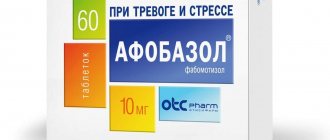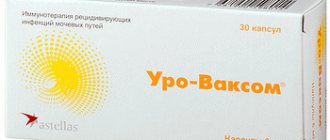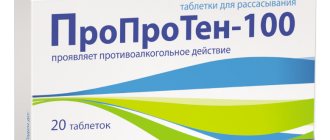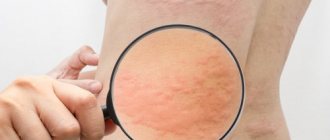Characteristics of the drug
Release form: capsules
Indications for use: skin fungus, thrush, lichen, fungal keratitis
Side effects: digestive disorders, headache, pulmonary edema
Contraindications: children under 3 years of age, heart failure, lack of sucrose in the body, pregnancy, breastfeeding, partial dysfunction of the liver and kidneys
Price: 690 rub.
Add to comparison
Compare
Orungamine is a drug used to combat mycosis. The drug is active against large groups of fungi and is effective against skin, mucous membranes and nails. The cost of the drug is an order of magnitude higher than the price of other drugs, but good tolerability justifies the high costs.
Operating principle
The drug belongs to drugs with a wide spectrum of activity. The action of the drug is based on the ability of Itraconazole, the main active ingredient of the drug, to stop the growth of fungal cells. The microorganism stops growing and eventually dies.
The component is absorbed into the blood plasma and reaches its maximum concentration after 4 hours. When taken regularly, the substance accumulates in the skin and keratin tissues. It is released as the epidermis (outer layer of skin) is renewed. The therapeutic effect lasts for a week after discontinuation of the drug. If the skin is damaged, the therapeutic effect lasts up to 1 month (if the tablets were taken for at least 4 weeks).
Medicinal properties
According to the instructions for use, Orungamine has antifungal properties. The main component of the drug is endowed with the property of suppressing the synthesis of ergoserol in the membranes of fungal cells. This drug is very effective against dermatophytes and mold fungi. Thus, it is used against Trichophytosis, Mycosporum, Phytosporum, Candida, Aspergillus, Histoplasma, Fonseceia, Cladosporum, Epidermophyton floccosum, Cryptococcus, Blastomycia and so on.
After the accepted dosage, the highest concentration of the active ingredient in the blood is detected four hours after use; it is better to drink the drug after a meal - so that the bioavailability is higher. The drug "Orungamine" can easily accumulate in tissues; it is very active in the skin four weeks after completion of the treatment course. The withdrawal period is about two days. Approximately twenty percent of the drug exits through the intestines. About thirty-six percent is in the urine.
Release form, storage conditions and cost
Orungamine is supplied to pharmacies in the form of pink gelatin capsules.
It contains 100 mg of medication in granular form. The tablets are placed in contour packaging with special cells. One pack contains from 4 to 50 capsules. The product is dispensed from pharmacies only with a doctor's prescription. Store at a temperature of 10-25 degrees. Shelf life - up to 3 years. The average cost in Russia is 687 rubles.
Contraindications
Orungamine should not be taken by patients with hypersensitivity to itraconazole, intolerance to sucrose and other components included in the drug.
The medication is prescribed with extreme caution to such categories of patients as:
- children under 3 years old,
- pregnant women,
- nursing mothers,
- patients with chronic pathologies of the cardiovascular system, liver and kidneys,
- patients with acute lung diseases,
- people with hearing problems,
- persons over 65 years of age.
Women of reproductive age should use contraception during the entire period of treatment with Orungamine, since the drug can cause defects in the embryo and fetus.
Indications for use
Orungamine capsules are prescribed to patients suffering from fungus of varying intensity. The tablet form helps to cope with the most severe and rare forms of damage: candidiasis of the intestines and esophagus.
The drug is prescribed by a doctor for:
- infection of mucous membranes;
- dermatomycosis (skin fungus);
- fungal keratitis;
- thrush;
- damage to the oral cavity by fungi of the genus Candida;
- systemic aspergillosis;
- pityriasis versicolor;
- for nail fungus (read more about the disease here).
Dermatomycosis
Mushrooms of the genus Candida
Pityriasis versicolor
Nail fungus
The medicine copes with cryptococci, dermatophytes, molds and yeast-like fungi.
Contraindications and restrictions
Orungamine tablets have virtually no contraindications. They are strictly forbidden to use in case of hypersensitivity or individual intolerance to the components of the drug.
The drug is used with caution in the presence of diseases of the cardiovascular system, in particular in chronic heart failure. The drug is not recommended for use during pregnancy or while breastfeeding.
It can be prescribed to pregnant women only in extreme cases, when a fungal infection poses a danger to the health of the mother or child
The drug is not recommended for use during pregnancy or breastfeeding. It can be prescribed to pregnant women only in extreme cases when a fungal infection poses a danger to the health of the mother or child.
During treatment, pregnant women must regularly visit their doctor and take all necessary clinical tests. This will help track the dynamics of therapy, as well as avoid undesirable consequences and complications.
Side effects
If the drug is taken incorrectly or is used for treatment for a long time, the patient may experience side effects:
- digestive disorders;
- angioedema;
- cholestatic jaundice and hepatitis;
- nausea and vomiting;
- pain in the stomach;
- headaches and fatigue;
- disruption of the menstrual cycle;
- decreased potassium in the body;
- darkening of urine;
- development of heart failure;
- pulmonary edema;
- hives, rashes, severe itching;
- baldness.
Digestive disorder
Headache
Heart failure
Hives, rashes, severe itching
Baldness
Please note that side effects occur due to individual intolerance and other characteristics of the body.
Orungamin
Release form, composition and packaging
Capsules No. 0, with a blue opaque cap and a pink transparent body; the contents of the capsules are spherical microgranules from light yellow to yellowish-beige.
- 1 caps. itraconazole 100 mg.
Clinical and pharmacological group: Antifungal drug
pharmachologic effect
Broad-spectrum antifungal drug, triazole derivative. The mechanism of action is associated with the ability of itraconazole to inhibit the synthesis of ergosterol in the cell membrane of fungi.
Active against dermatophytes, yeast-like fungi and yeasts Trichophyton spp., Microsporum spp., Epidermophyton floccosum, Cryptococcus neoformans, Pityrosporum spp., Candida spp. (including Candida albicans, Candida glabrata and Candida krusei), Aspergillus spp., Histoplasma spp., Paracoccidioides brasiliensis, Sporothrix schenckii, Fonsecaea spp., Cladosporium spp., Blastomyces dermatitidis.
Pharmacokinetics
Suction
When taken orally, maximum bioavailability of itraconazole is observed when capsules are taken immediately after a heavy meal. Cmax in plasma is achieved within 3-4 hours after oral administration.
Distribution
With long-term use, Css is achieved within 1-2 weeks and is 3-4 hours after taking the drug 0.4 μg/ml (when taking 100 mg 1 time/), 1.1 μg/ml (when taking 200 mg 1 time/) and 2.0 mcg/ml (when taking 200 mg 2). Plasma protein binding - 99.8%. The accumulation of the drug in keratin tissues, especially in the skin, is approximately 4 times higher than the accumulation in plasma, and the rate of its elimination depends on the regeneration of the epidermis.
In contrast to plasma concentrations, which are undetectable 7 days after cessation of therapy, therapeutic skin concentrations persist for 2 to 4 weeks after cessation of a 4-week course of treatment. Itraconazole is detectable in nail keratin as early as 1 week after initiation of treatment and persists for at least 6 months after completion of a 3-month course of therapy. Itraconazole is also detected in sebum and, to a lesser extent, in sweat.
Itraconazole is well distributed in tissues that are susceptible to fungal infections. Concentrations in the lungs, kidneys, liver, bones, stomach, spleen and muscles were 2-3 times higher than the corresponding plasma concentrations. Therapeutic concentrations in vaginal tissues remain for another 2 days after the end of a 3-day course of treatment at a dose of 200 mg/day, and 3 days after the end of a one-day course of treatment at a dose of 200 mg 2 times a day.
Metabolism
Itraconazole is biotransformed in the liver to form a large number of metabolites, one of which, hydroxyitraconazole, has antifungal activity comparable to itraconazole in vitro.
Removal
Elimination from plasma is biphasic with T1/2 in the terminal phase from 24 hours to 36 hours.
From 3 to 18% of the dose is excreted through the intestines. Approximately 35% of the dose is excreted as metabolites in the urine within 1 week.
Indications
- dermatomycosis;
- fungal keratitis;
- onychomycosis caused by dermatophytes and/or yeasts and molds;
- systemic mycoses: systemic aspergillosis and candidiasis, cryptococcosis (including cryptococcal meningitis), histoplasmosis, sporotrichosis, paracoccidioidomycosis, blastomycosis and other systemic or tropical mycoses;
- candidomycosis with damage to the skin or mucous membranes, incl. vulvovaginal candidiasis;
- deep visceral candidiasis;
- pityriasis versicolor.
Dosage regimen
For optimal absorption of itraconazole, Orungamine should be taken immediately after meals. Capsules should be swallowed whole.
Indication / Dose / Duration
- Vulvovaginal candidiasis / 200 mg 2 times a day. / 1 day
- 200 mg 1 time/day. 3 days
- Pityriasis versicolor / 200 mg 1 time / day. / 7 days
- Dermatomycosis of smooth skin / 200 mg 1 time / day / 7 days
- 100 mg 1 time/day. / 15 days
- Fungal keratitis / 200 mg 1 time / day / 21 days
- Lesions of highly keratinized areas of the skin, such as the hands and feet, require additional treatment for 15 days at 100 mg/day.
- Oral candidiasis / 100 mg 1 time / day. / 15 days
The oral bioavailability of itraconazole may be reduced in some immunocompromised patients, such as neutropenic patients, patients with AIDS, or organ transplant recipients. Therefore, a doubling of the dose may be required.
For onychomycosis, pulse therapy is used. One course of pulse therapy consists of taking 2 caps daily. Orungamina 2 times/day. (200 mg 2) for 1 week.
For the treatment of fungal infections of the nail plates of the hands, 2 courses are recommended. For the treatment of fungal infections of the nail plates of the feet, 3 courses are recommended (see table). The interval between courses during which you do not need to take the drug is 3 weeks.
Clinical results will become obvious after the end of treatment, as the nails grow back.
Localization of onychomycosis 1st week. 2nd, 3rd, 4th week. 5th week 6th, 7th, 8th week. 9th week
- Damage to the nail plates of the feet with or without damage to the nail plates of the hands 1st course / interval between courses / 2nd course interval between courses / 3rd course
- Damage to the nail plates of the hands / 1st course / interval between courses / 2nd course — —
- For onychomycosis, continuous therapy of 2 caps is also possible. per day (200 mg 1 time/day) for 3 months.
The elimination of itraconazole from the skin and nail plates is slower than from plasma. Thus, the optimal clinical and mycological effects of the drug are achieved 2-4 weeks after the end of treatment for skin infections and 6-9 months after the end of treatment for nail infections.
For systemic mycoses, recommended dosages vary depending on the type of infection.
Indication / Dose / Average duration / Notes
- Aspergillosis / 200 mg / 1 time/day. / 2-5 months increase the dose to 200 mg 2 times a day. in case of invasive or disseminated disease
- Candidiasis / 100-200 mg / 1 time/day. / from 3 weeks to 7 months
- Cryptococcosis (except meningitis) / 200 mg / 1 time / day.. / from 2 months to 1 year -
- Cryptococcal meningitis / 200 mg / 2 times / day.. / from 2 months to 1 year / maintenance therapy (cases of meningitis) 200 mg 1 time / day.
- Histoplasmosis / from 200 mg / 1 time / day. up to 200 mg 2 times/day. / 8 months —
- Sporotrichosis / 100 mg / 1 time/day. / 3 months —
- Paracoccidioidomycosis / 100 mg / 1 time/day. / 6 months —
- Chromomycosis 100-200 mg 1 time / 6 months -
- Blastomycosis / from 100 mg / 1 time / day to 200 mg 2 times / day. / 6 months —
Side effect
From the digestive system: dyspepsia, nausea, abdominal pain, constipation, reversible increase in the activity of liver enzymes, cholestatic jaundice, hepatitis; very rarely - severe toxic liver damage (including cases of acute liver failure with fatal outcome).
From the central nervous system and peripheral nervous system: anorexia, headache, fatigue, dizziness, peripheral neuropathy. From the reproductive system: menstrual irregularities.
From the urinary system: hypercreatininemia, dark colored urine.
Metabolism: edema, hypokalemia.
From the cardiovascular system: congestive heart failure, edema, pulmonary edema are possible.
Allergic reactions: itching, rash, urticaria, angioedema, Stevens-Johnson syndrome.
Other: alopecia.
Contraindications
- simultaneous use of terfenadine, astemizole, mizolastine, cisapride, dofetilide, quinidine, pimozide, triazolam, midazolam (metabolized with the participation of the CYP3A4 enzyme);
- simultaneous use of HMG-CoA reductase inhibitors (simvastatin, lovastatin);
- hypersensitivity to the components of the drug.
During pregnancy, Orungamine is prescribed only in cases where the expected benefit of therapy for the mother outweighs the potential risk to the fetus.
Prescribed with caution in childhood, with severe heart failure, liver diseases (including those accompanied by liver failure).
special instructions
During the course of treatment with Orungamine, pay attention to several key points:
- If the patient's medical history contains a record of heart failure, you should refrain from taking the drug. Otherwise, the risk of relapse increases.
- Use caution when taking itraconazole and calcium channel blocking drugs together.
- With increased stomach acidity, the absorption of the drug components decreases. To correct this, take antacid medications. This should be done 2 hours after taking the main medication.
- During therapy with itraconazole, the liver should be examined regularly. If serious violations are detected during the period of use, Orungamine should be immediately replaced with another drug.
- At the first signs of hepatitis (dark urine, anorexia, weakness and nausea), undergo a medical examination of the liver.
- For patients with reduced immunity (AIDS, neutropenia, recovery period after organ transplantation), the dosage may be increased.
If you accidentally take a large dose, rinse your stomach and take activated charcoal. Therapy should be symptomatic.
Additionally
If indicated for nursing mothers, breastfeeding should be stopped during itraconazole therapy. The active component has a negative inotropic effect, which may result in the development of myocardial failure. The patient should be warned about the possible development of heart failure. If signs of myocardial failure appear, therapy should be stopped. Reduced gastric acidity can significantly impair the bioavailability of itraconazole-containing drugs. When hepatotoxic drugs are combined with itraconazole, the risk of severe liver dysfunction, including death, increases significantly. Regular monitoring of the functional state of the liver is required during therapy with Orungamine capsules. If symptoms of liver damage appear, the drug is discontinued. In patients with cirrhosis, increased doses of the drug are required due to impaired bioavailability when taking capsules. Therapy is stopped when symptoms of neuropathy appear.
Instructions for use. Acceptable doses.
To ensure the maximum and lasting effect, it is recommended to drink the capsules after meals. The dosage and course of treatment are established after an accurate diagnosis:
- Thrush. Take 1 capsule per day for 3 days or drink 4 capsules for 1 day (2 pieces at a time).
- Pityriasis versicolor. Drink 2 capsules per day in one dose. The course of treatment takes one week.
- Oral candidiasis. Drink one capsule per day for 15 days.
- Nail fungus. Take one capsule daily for a month.
Before starting treatment, be sure to consult your doctor. It is possible to adjust the scheme and course of treatment.
Alcohol compatibility
Considering that in many situations you have to take this medication for a long time, many people wonder whether it is possible to combine alcoholic drinks with this antifungal drug. The answer will be negative, because alcohol greatly weakens the immune system, which leads to increased development of the disease, in particular, this drug may simply lose its medicinal properties. Thus, concomitant use is simply incompatible. This interaction increases the load on the liver and digestion, which subsequently negatively affects health.
Price and analogues
Itracone has the same properties as Orungamine, but has a different composition
You can purchase the drug at almost any pharmacy, but it is only available with a prescription. The average price for Orungamin is 500-600 rubles. The drug has many analogues, but their cost does not differ much. The most common are the following:
- Vfend.
- Mikosist.
- Medoflucon.
- Candizol.
- Itrakon.
- Mycomax.
- Candithral.
- Orungal.
- Irunin.
The listed drugs have a similar principle of action, but differ in composition. Selection of an analogue is advisable if Orungamine does not provide the required therapeutic effect, as well as in the case of individual intolerance to its components or hypersensitivity to it. You can select a similar remedy only after consultation with a specialist, since all drugs differ in their contraindications and side effects. In addition, the dosage of the analogue may be completely different.








